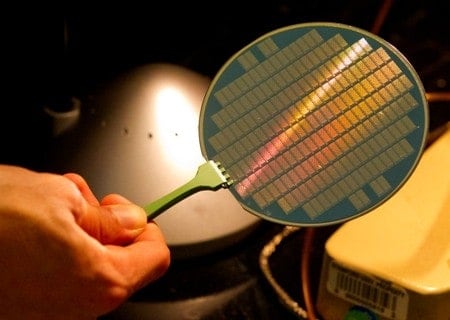With support from the National Science Foundation (NSF), a team of Stanford University engineers has for the first time built a tiny computer with 178 transistors made from carbon nanotubes, a semiconductor material that may replace silicon in computer chips.
This change could launch a new generation of electronic devices that are smaller, cheaper, faster and more energy-efficient than those of today.
“This is greater than a promise,” said Mihail Roco, senior advisor for Nanotechnology at NSF, and a key architect of the National Nanotechnology Initiative, “In the years ahead, it is a probability.”
The achievement, which culminates years of effort by scientists around the world, is detailed today in the cover story of the journal Nature. The research is led by Stanford professors Subhasish Mitra and H.S. Philip Wong.
“People have been talking about a new era of carbon nanotube electronics moving beyond silicon,” said Mitra, an electrical engineer and computer scientist at Stanford. “But there have been few demonstrations of complete digital systems using this exciting technology. Here is the proof.”
“This paper details a most significant nano-enabled integrated system with nanotubes that can perform a general set of computer programs proposed to replace the current transistor technology,” said Roco.
“They have designed what is called a ‘Turing complete’ computer,” explained NSF Computer Information Science and Engineering program manager Sankar Basu, who managed the funding for this project.
“This is an important scientific and engineering breakthrough,” Basu and Roco agree.
While engineers have looked hopefully on the potential of carbon nanotubes, also known as CNTs, to take electronics to a magnitude in performance beyond silicon, inherent imperfections have stood in the way of putting this promising material to practical use. CNTs do not necessarily grow in neat parallel lines, as chip-makers would like. Further, their conductivity is not uniform.
“Nanotubes are like spaghetti,” explained Basu. “They are like a mound of entangled strings of materials with different conductivity. This new, ‘imperfections immune design’ makes this discovery truly exemplary and the most likely avenue for implementation.”
The Nature paper describes a two-pronged approach that enabled these Stanford engineers to create this “imperfection-immune design” for this basic computer.
See the Stanford press release for details.
“We have entered the third generation of nanotechnology,” summarized Roco. “Building this prototype computer was only part of the achievement. Determining how to to use it, precisely identifying which tiny devices will be tested and found to run more efficiently with this incarnation–these remain to be seen. It will be exciting to watch for the next steps in the years ahead.”

